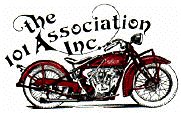Hi all,
Time to work on the forks for the ongoing restoration.
I have to sort out the steering head thread which is worn, so that's work in progress.
I saw Tim's comment on replacing the whole stem, but I'm going to try replacing only the top part with the guys at Exactweld in the UK doing the welding/brazing. There's nobody better I know in the UK for TIG welding and brazing.
Anyway to the point, I have screwcut a new threaded section to fit the top cone adjuster and there's a fair bit of "slop" between the thread and the handlebar casting.
I was thinking that a better design would be to make a custom "Head Adjustment Cone Nut" N1512/17B3 with an extended thin-walled (and threaded) section that extends most of the way through the handlebar casting.
Then slightly bore out the casting so it is truly round again to fit the new nut.
This would negate the need for the lock washer as the clamp screws would clamp the centre nut and the outer fork stems.
Question is ... what do you think??? Has anyone else done this? Or more to the point has anyone done this and found it hasn't worked!
Also my original centre nut measures 1.300" across flats ... is this right?
Comments appreciated, thanks Mick


